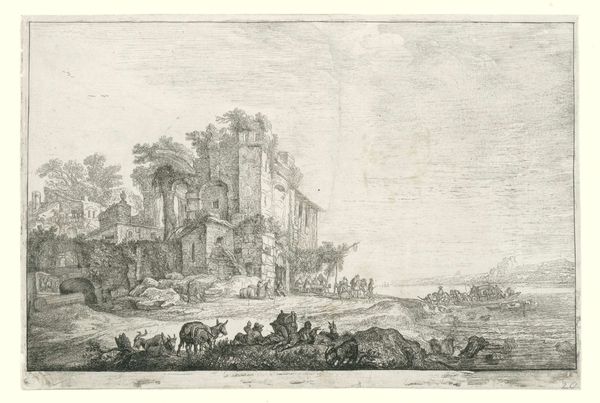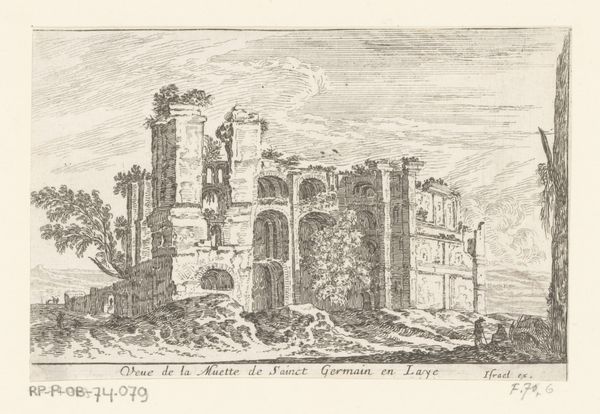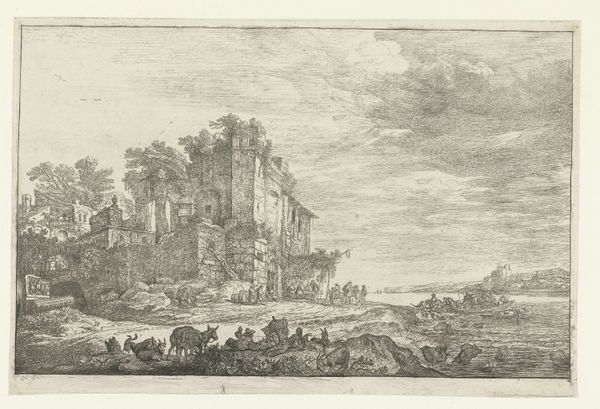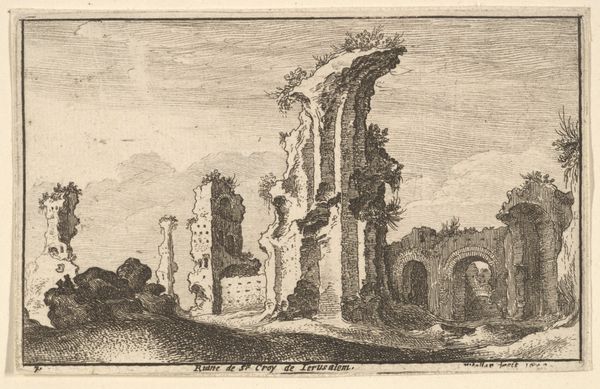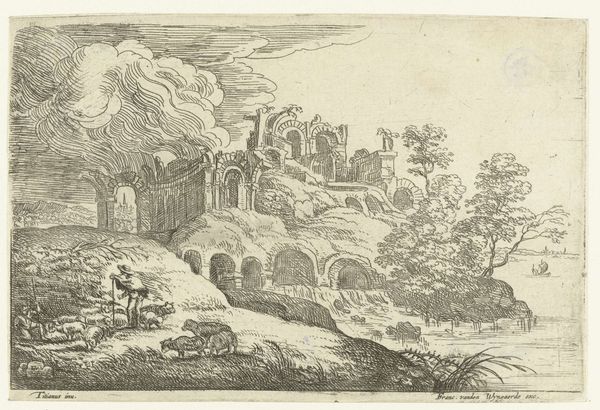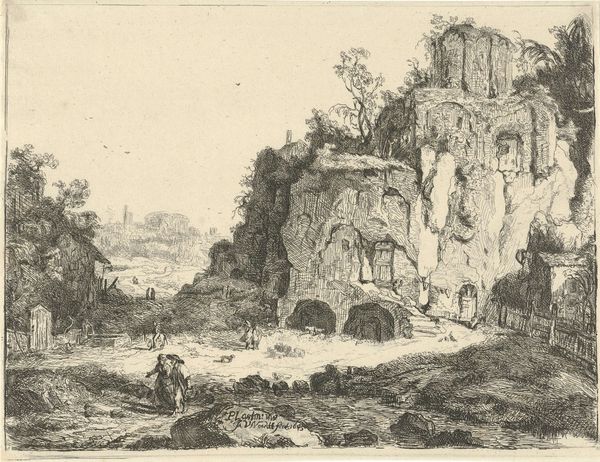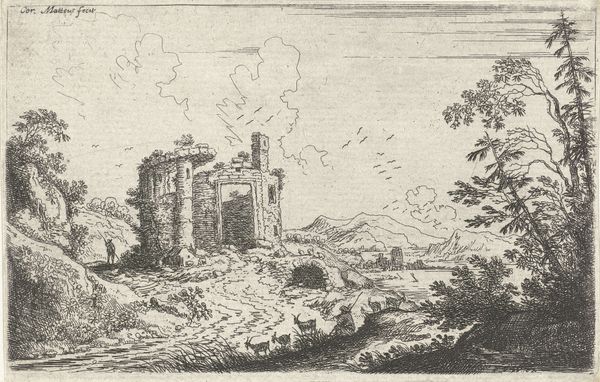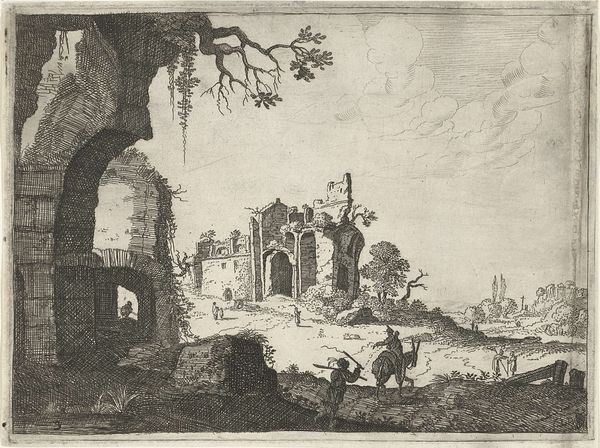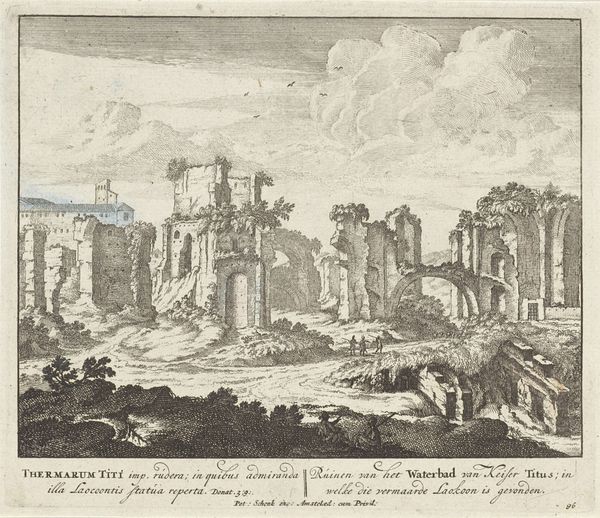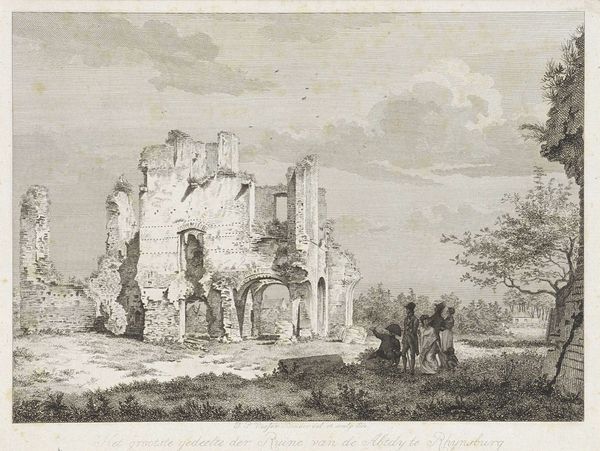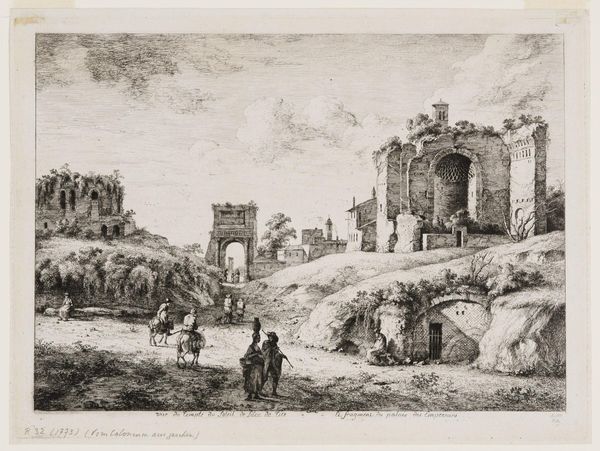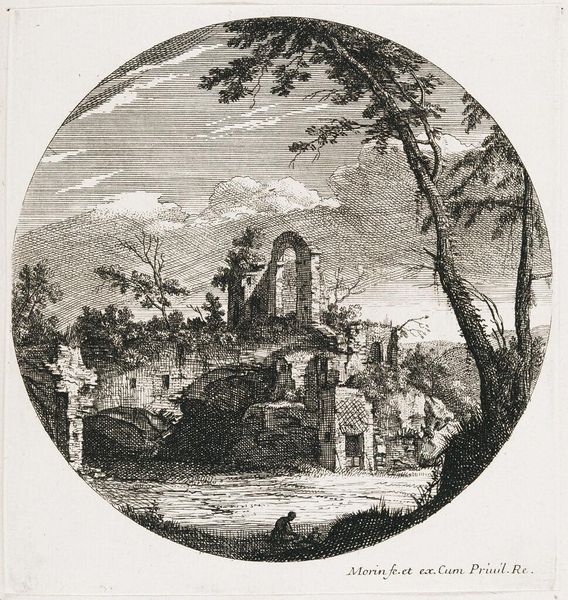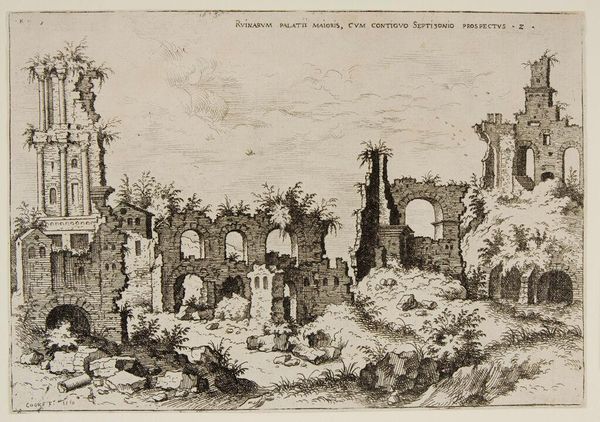
print, etching
#
baroque
# print
#
pen sketch
#
etching
#
old engraving style
#
landscape
#
pen-ink sketch
#
pen work
#
genre-painting
Dimensions: height 227 mm, width 321 mm
Copyright: Rijks Museum: Open Domain
Pieter Nolpe created this landscape with a bridge and a ruin as an etching sometime in the 17th century. Looking at the image we can see that Nolpe included a horse rider and a horse-drawn carriage crossing a bridge. On the other side we see a goatherd resting beside a ruin that’s in the process of being reclaimed by nature. Images of ruins and peasant life had been around since the late 15th century, often intended as allegories for life’s transience, or reminders of an idyllic past, now gone. In the Dutch Golden Age, landscapes acquired new levels of symbolic meaning. By representing the land, Dutch artists and patrons were also representing their young nation. Further research into the artist’s biography, period writings, and the cultural context that shaped Nolpe's vision, all help to shed light on his artistic decisions. Art history allows us to look at works of art as products of their time.
Comments
No comments
Be the first to comment and join the conversation on the ultimate creative platform.
